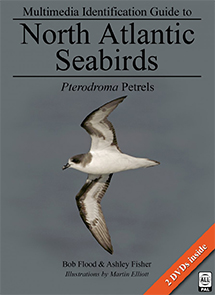Weekly round-up: 14 - 20 May 2014
The past seven days have been something akin to shooting fish in a barrel as the predicted warm weather did just what was expected and as was touched upon here last week, the summery conditions landed a fine array of birds across southern England before the weekenders could get out of the door.
As predicted, a sizeable high pressure set about us all as Saturday loomed, light southerlies and south-easterlies were accompanied with temperatures nuzzling the mid 20’s in weather that was more akin to mid-July rather than mid-May (for instance highs of 21 degrees were noted for the north of Ireland and 24 to 25 degrees ~ that’s the middle 70’s.
That first real pulse of genuinely hot weather pushed a nice array of Mediterranean goodies towards the far southwest and the western coasts of Wales and Cornwall popped in a classy shorebird too, but it was Shetland that held station as the place to be with it’s double-bill of birds of the highest quality, unless you had a penchant for an almost mythical seabird of course…
”Triangle”.
”Shorts”.
These have to be the two most likely answers in any word association game where you start with “Bermuda”. And maybe “Manilow” too, on a bad day.
That is unless you’re in to birds.
If you are, you will, quick as a flash, respond with “Petrel”. And a grin.
And grinning the biggiest, widest, grinniest of grins is precisely what the birders aboard the RV Celtic Voyager were doing sometime after 6pm on 19th as they’d just had an astonishing encounter, with the fabled Cahow ~ the Bermuda Petrel some 200 miles WNW of Slea Head, off the coast of County Kerry (so still "tickable" in most people's books). And they’d snapped it and posted the shots before any of the onliners could say "oh really?" and the inevitable "I hope there's photos...".
BRAVO!
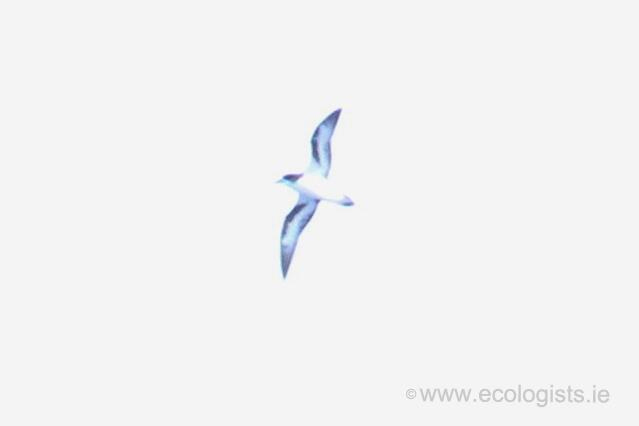
What a fantastic record…!
Niall Keogh managed to take seabirding (on our side of the Atlantic) to a new place with this jaw-dropping record ~ ignoring the other Pterodromas, even by-passing the (very much) on-the-cards Black-capped Petrel and going right in, right over the top (in a daring birding move somewhere akin to Roy Keane’s tackle on Alf-Inge Haaland ~ hmmm tenuous…) and landing the Ace-in-the-Hole.
The Western Palearctic Pterodroma Motherlode.

Like Black-capped Petrel, Bermuda Petrel, despite its extreme rarity in world terms, has been an expected (ultra-)vagrant to the seas off Ireland ~ an expectation based upon solid scientific tracking data to back up seabirding experts’ hunches.
A hunch that Niall had been working his way towards for a some while, a hunch that, upon hearing about just where the ship was heading, made him take a place on board with the notion of (however bonkers it seemed to some) of finding the species on this very voyage.
As we know, the bird was on view for around a minute, no more, and was seen by just a handful of people. Along with Niall, Ryan Wilson-Parr was on hand to rattle off a select number of shots ~ they may be old school in terms of quality but they show an identifiable Bermuda Petrel!!!
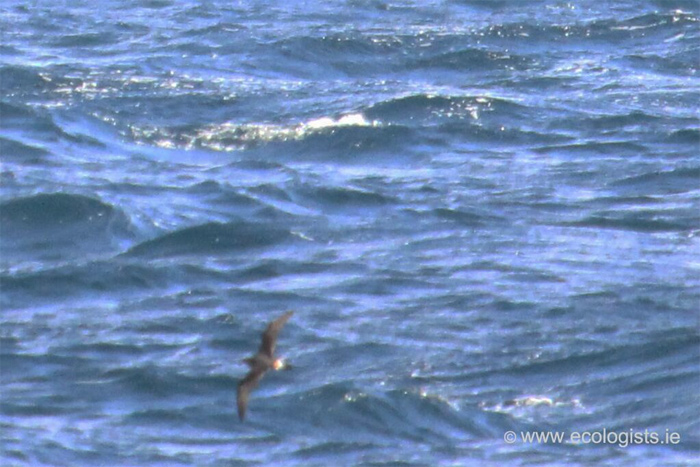
In their superb book, “Multimedia Identification Guide to North Atlantic Seabirds:Pterodroma Petrels” authors Bob Flood and Ashley Fisher write in detail not only about the at-sea idenification of Bermuda Petrel but also its known tracked vagrancy, one bird already coming to within less than 150 miles of Ireland. With their permission, here are a couple of pertinent extracts, relating to vagrancy, from the book.
“Very recent geolocator studies of adult birds, giving 15 lots of usable data…(dispersal) in the non-breeding season is shown to have two concentration points: west and north of Bermuda, and off the Azores Islands in the northwestern Atlantic.”

c170nm WNW of Slea Head, Co.Kerry (© Ryan Wilson-Parr)
“…the only at-sea records away from Bermuda involve one photographed in the Gulf of Maine in June 2009, and a small number seen during short-range pelagic trips into the Gulf Stream off Hatteras, North Carolina (USA) where it was first recorded in 1993. Off Hatteras, it is a very rare but fairly regular visitor May-June….rarer and irregular July-September…with records in April and December.”
Later in the book, the authors expand on the information with regard to two birds (from six viable individuals) who had their geolocators redeployed on them in early 2012 and their non-breeding season dispersal.
“Two…spent several weeks off northwest Europe, at times between southwest Ireland and northwest Spain, coming fairly close to land at both locations (about 125-150 miles), confirming waters of northwest Europe are part of the maximal range. Another bird spent two consecutive years between Bermuda and the USA during both breeding and non-breeding season. Nothing is known about the at-sea range of immature birds”.
This was a species that was most definitely on the cards and more can also be gleaned from an article currently in press for North American Birding called 'Conservation and at-sea range of Bermuda Petrel (Pterodroma cahow)' by Jeremy Madeiros, Bob Flood & Kirk Zufelt.
This paper will be well worth tracking down when published ~ information within the paper indicate that a route taken by an adult Bermuda Petrel through March and April 2010 arguably pushed it closer to the Irish coast than this week’s bird…and their foraging ranges outside of the breeding season mean that someone, somewhere is going to see another in Irish or maybe even British waters ~ and a trip to Porcupine Bank would seem a likely trip for the most intrepid lister within the next couple of Mays.
The history surrounding this fabled species is well known ~ eaten in to what was widely held to be extinction (a theory that held for over 300 years), confirmation of the survival of the species was confirmed by a small expedition around the rocky islets and outcrops of Bermuda in 1951 that found 18 breeding pairs ~ a “Lazarus species” bar none.
Through the following six decades local and international conservationists have worked hard to ensure, first and foremost, the survival of the Bermuda Petrel and to push it forward and prosper as a breeding species. The 2012/’13 breeding survey revealed 103 nesting pairs and the world population is thought to be around some 300-350 individuals (Flood and Fisher 2013).
Despite the fact that Bermuda Petrel was one of those wildcard potential additions to the list, it is still a pretty humbling fact that one of the world’s rarest seabirds has finally been observed in waters close enough to all of us to make your jaw drop.
If you don’t own a copy of the North Atlantic Seabirds:Pterodroma Petrels” book and dvd set, order one ASAP ~ when you’ve got it, turn to page 112 and read Inset 2 (and watch Disk 2 as well) to learn more about “Saving the Bermuda Petrel”.
It really is quite a story…
That little gem found on last week’s Fair Isle, the decidedly perky-looking first-summer Hermit Thrush seemed to find the island life to its liking (for the time being at least) and after making it to Day 2 by showing from early in the day on 14th it then made it to Day 4 with news on 16th that it was still in place at Furse.

A four day stay made it the “longest” staying spring Hermit Thrush ~ those two other Shetland records being the one-day first in 1975 and a two-dayer on Fetlar in April-May 1998. It also eases past seven of our autumn records, a combination of further one- and two-day birds, drawing level with last autumn’s late October bird at Porthgwarra (present from October 29th-1st November 2013) and trailing behind two eight-day birds ~ the much-admired individual on Tresco from October 11th-18th 1993 (tho’ it was only seen on five of those days) and another that went missing for a day or two on Barra, present (off and on) between October 9th-16th 2010.
Also clocking up the days on Fair Isle this week was the fine male Caspian Stonechat that was present all the way to 20th and registering an unprecedented stay of 24 days. That “there-for-the-summer” idea many not be quite so daft after all…

Popping one of these cracking waders in to the Headline Birds column may seem ever-so-slightly OTT but this week’s new arrival was not only a classic warm-weather find in arguably the classic month for the species but it was also an absolute stonker for the county that was graced by this particular Xenus’ presence.
The far southwest of England has never been awash with appearances from Terek Sandpiper and birders brandishing the flag of St. Piran may have wandered if they’d ever get the chance to ink in that little box on their Cornish lists. Now, with the news of one on the Amble Marshes, near Wadebridge on the morning of 16th, they got their chance (though it turns out that it was discovered the day before too).
This is just the second record for Cornwall, the first spending just a day at the Melancoose reservoir, near Newquay on June 13th 1961. A month shy of 53 years is a very long time to wait for a second, but there it is, and it must have been a supremely exciting moment when it wandered in to view.
Up until the end of 2012 there were over 80 records of Terek Sandpiper on the British and Irish Lists, with well over a quarter of those arriving in May. Of those 80+ records, the true southwest lays claim to only 11 ~ one for Scilly, two for Devon and Somerset and four for Dorset along with the now two Cornish birds.
Terek Sandpiper is almost as rare in Lincolnshire as it is in Cornwall, prior to this week the east coast county held just two records, so the after-dark news of one showing at Covenham Reservoir would have had a few local listers biting their nails as dawn broke on 20th.
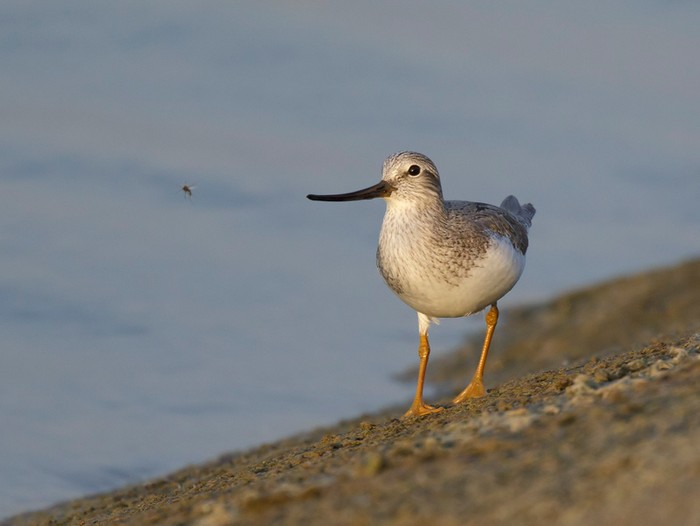
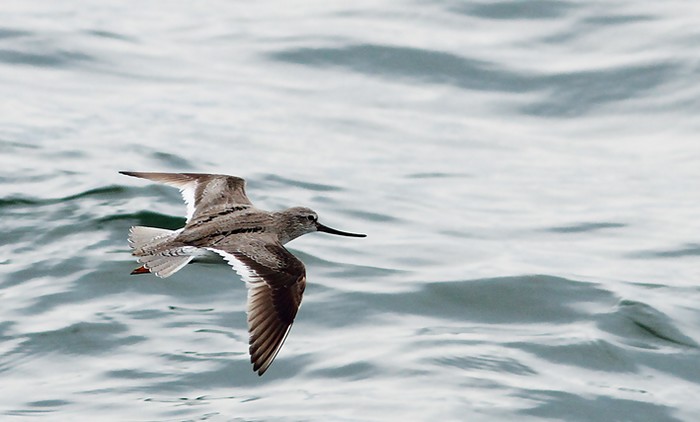
Thankfully the bird (presumably the same bird seen in Cornwall, exiting the UK via the east coast) behaved itself and was still in place and subsequently showed well to all comers. Lincolnshire’s only records to date have been singles at Gibraltar Point, both one-day birds, on July 11th 2005 and June 17th 2009.
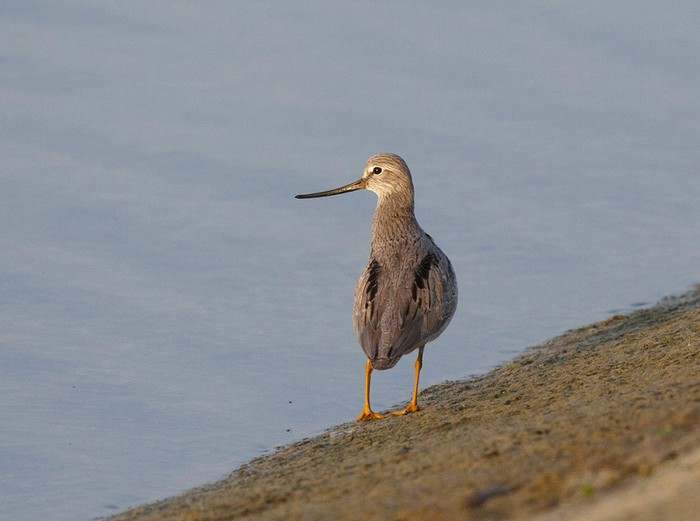
So, a commoner-than-usual species to mention in the headlines, indeed one that has been annual since 2007 (2006 is actually the only blank year in the last 19…) but that is not to take anything away from the sheer quality of this ultra-distinctive, enigmatic and charismatic little shorebird. They rock. End of.
Headline birds were, in all honesty, pretty hard to come by this week ~ in keeping with the weather it was siesta-time for all our hoped for monster rares ~ but there was plenty of other things to keep people on the go and amongst the families to do just that were seabirds.
By the end of the weekend, almost 60 Long-tailed Skuas had been recorded, spread around five sites, with North Uist’s Air an Runair faring best with 35 birds seen on three dates; 14 noted on 14th, 18 on 15th with three there on 16th. A flock of 15 headed past Birsay on the Orkney Mainland on 15th while Shetland’s Wats Ness scored three on 16th and singles were seen off Saltcoats (Ayrshire) on 14th and Powillimount (Dumfries & Galloway) on 17th. The 19th saw two pass Coliemore (Co. Dublin) and an adult was seen at Glen Aray (Argyll & Bute) while out on the RV Celtic Voyager 160 were counted before it all went haywire… The final one of the week was seen off the coast of County Waterford, at Ballinclamper on 20th.
Pomarine Skuas, although not out in force as in some springs, did manage to muster a nice modest three-figure total of 162+ by the end of 20th. As with the Long-taileds, the prime action came from Aird an Runair, North Uist where 73 birds were counted across the first three days of the new review period, with 34 on 14th being followed by 33 on 15th. Birds were noted in 11 other coastal counties, all of them the usual suspects, with 19 from Kent’s Dungeness on 19th and 10 each for Splash Point (East Sussex) and Powillimount (Dumfries & Galloway) on 18th being the other double figure counts.
All on its own was the single Balearic Shearwater that flew past Berry Head (Devon) on 20th.
In one of those delicious quirks that so often gets thrown our way from time to time, the “rarest” bird on Fair Isle this week was a brand, spanking new island first ~ a Glossy Ibis!
Perhaps the bird that has been seen around Shetland off-and-on for a wee while could have headed south from the Mainland or maybe the long-stayer from North Ronaldsay finally spread its bronzed wings on a brisk sou’westerly and took a short flight north. It seems to have been the latter (the NRBO register for the day showed that G. Ibis was missing) but not that the ardent Fair Isle lister will worry one jot about that (and one was at the south end of Mainland Shetland, at Loch of Hillwell on 20th).
Chalk up species # 382 for the island which, of course has had two more Hermit Thrush and two more Cretzschmar’s Buntings to date than the long-overdue new species logged this week….and that’s just for starters ~ the ratio of Fair Isle Lanceolated Warblers to Glossy Ibis is around 50:1.
After a day trip to Shetland, North Ronaldsay welcomed back their long-staying roamer on 18th and dropping south into northern England, a single bird remained around the Edderthorpe Flash area of South Yorkshire all week and another appeared at Willow Tree Fen LWT reserve on 15th-16th. Lone Glossy Ibis in the Midlands were still at Hoveringham (Nottinghamshire) until 16th and at Rutland Water (Leicestershire) to 20th.
In Norfolk, a singleton remained on Hickling Broad NWT to 16th while the southeast were represented by one still on Otmoor RSPB (Oxfordshire) to 19th. In the southwest, the only Glossy Ibis noted were the two first-summers back again at Coward’s Marsh (Dorset) from 15th, hot-footing it back from their day-trip to Hampshire last week. The Welsh double remained at the National Wetlands Centre (Carmarthenshire) to 14th with the final individual of the week appearing near Shanagarry Marsh (Co. Cork), also on 14th.
In north Wales, a Black Stork was found over Llandudno Junction (Conwy) during the late afternoon of 20th before being tracked along Colwyn Bay. To make an exciting bird that much more entertaining, it becomes the first for Conwy too.
What was presumably last week’s Purple Heron on St. Martin’s moved to St. Mary’s on 14th and a second was noted in Kent, at Nickoll’s Quarry on the morning of 16th.
In Somerset, at Steart’s Wall Common, a Cattle Egret remained to 16th at least while the pair in southeast Ireland still seemed to be enjoying the high-life at Tacumshin, present to 19th.
Great White Egrets doubled their numbers this week, with at least 20 noted through the past seven days. Three birds seen flying past Abbotscliffe, Folkestone (Kent) on 17th would have been a rather impressive over-the-sea sight, and a fourth was noted in the county, at Oare Marshes NR on 14th. At least three were on the Somerset Levels through the week and two birds were noted again at Welney WWT (Norfolk) on 14th.
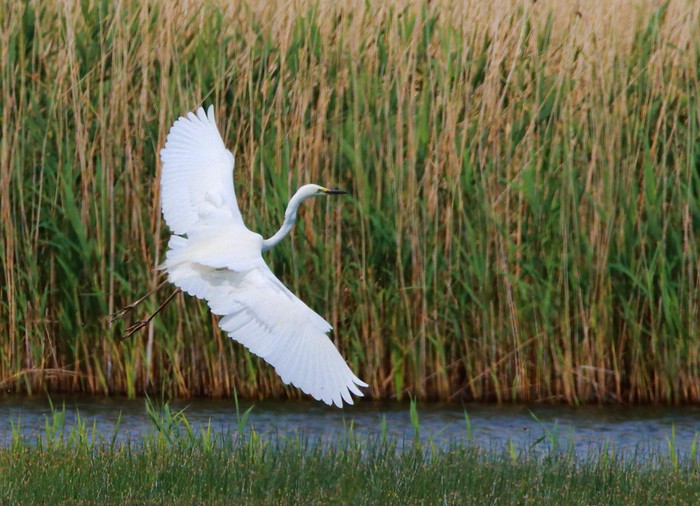
Elsewhere there were singles were noted as follows ~ on 14th, one was at Cors Erddreiniog (Anglesey) with birds on 15th appearing at Kenfig NR (Glamorgan) and Poole Harbour (Dorset). The 16th saw one head over Polgigga (Cornwall) ~ on a particularly hectic day for the site ~ along with others at Red Rocks NR (Cheshire) and Cowpen Marsh (Cleveland). In Cambridgeshire, the Ouse Washes hosted a Great White Egret on 17th as did Amberley Wild Brooks RSPB (West Sussex). The final singles of the week were reported from Marshside RSPB (Lancashire) on 18th, Druridge Polls NR (Northumberland) on 19th and Polmont (Forth) and Lough Beg (Co. Derry) on 20th.
Numbers of Spoonbills were up a little too on last week’s figures, at least 65 birds noted across 22 counties with two single in Ireland as well.
Up to eight birds were noted around Kent and up to six in Suffolk included three at Mickle Mere on 18th. Further trios on the same date were seen at Medmerry (West Sussex) and Middlebere, Poole Harbour (Dorset) ~ with six here, the week’s high on 20th ~ and another threesome headed past Selsey Bill (West Sussex) on 19th. Two birds were a long way north at Loch of Strathbeg RSPB (Aberdeenshire) on 17th (another single was seen elsewhere in the county, at St. Cyrus on 19th ~ they all joined up on 20th) and another Scottish bird was in Angus, at the Montrose Basin on 18th.
The majority of other Spoonbills were spread along the east and south coasts, a minimum five in Norfolk, three or four in Northumberland and two in Cleveland for instance, while an inland bird of note appeared at Bredon’s Hardwick (Worcestershire) on 15th appearing the following day at Belvide Reservoir (Staffordshire) with it or another arriving at Summer Leys NR (Northamptonshire) on 19th and a fourth inland record followed at Badshot Lea (Surrey) on 20th.
Ireland’s singles were seen at Kilcoole (Co. Wicklow) on 16th and Wexford’s North Slob on 19th.
Small numbers of Common Cranes were liberally scattered around East Anglia throughout the week ~ on 14th two were seen over Eastbridge (Suffolk) and one was noted over Cley and then, three hours later, at Terrington St. Clements (Norfolk). On the edge of the Norfolk Broads, twos (the same two?) were seen over Cantley Marshes RSPB on 15th, at Strumpshaw Fen RSPB on 16th and 19th and Rockland Broad, also on 19th. In Suffolk, the Eastbridge Two were seen again near Walberswick on 16th and in Cambridgeshire there were two birds at Burwell Fen on 16th and the Nene Washes RSPB on 18th. A single was also seen on the Ouse Washes RSPB too.
Elsewhere in the country, a Common Crane was at Potteric Carr (South Yorkshire) on 14th and a first-winter was at Braunton Burrows (Devon) on 15th. Another youngster headed over Polgigga and Carn Brea on 16th, looming over the Hayle Estuary an hour later before resurfacing off along the north coast at the Walmsley Sanctuary on 17th. Also on 17th, single birds were over Fylingdales Moor (North Yorkshire) (its lucky they didn’t shoot it out of the sky thinking it was some weird feathery-drone thing or something…), Dowlaw (Borders) and Ferndown (Dorset), a bird which was then seen in the New Forest, at Cares Down late the same day. Finally, two Cranes were seen at Goonhavern (Cornwall) on 19th and another duo were over Berkeley (Gloucestershire) but may have been from duff (errrr, introduced, stock).
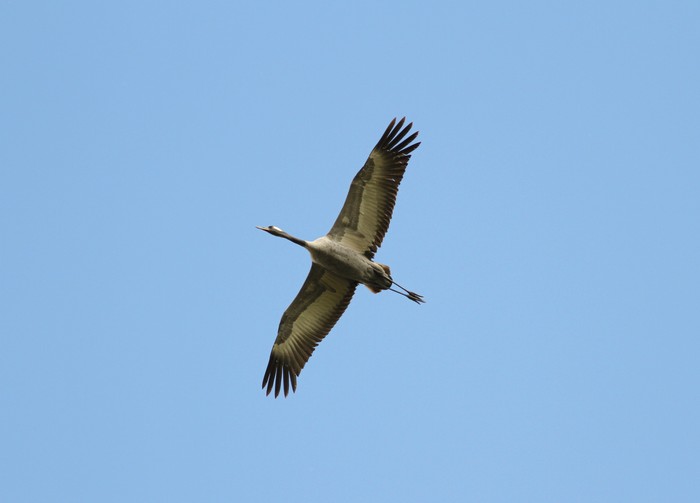
The week’s only singing Spotted Crake was noted at some ungodly hour of the morning at Wicken Fen NT (Cambridgeshire) on 18th.
Still finding the tropical warmth of Suffolk very much to its liking was the adult Black Brant that stuck it out at Levington Creek from 15th-17th. The origins of a Snow Goose at Kinnaird Head (Aberdeenshire) on 19th are unknown but a departing bird isn’t out of the question.
Scotland offered up three drake American Wigeons this week ~ new were the birds found at Loch of Strathbeg (Aberdeenshire) on 15th-20th and on Loch Stiapabhat, Lewis (Outer Hebrides) from 16th-19th. Across on Tiree, the third bird of the week remained around the island to 19th.
A departing drake Green-winged Teal was at Balnakeil (Highland) on 14th while 15th saw two of the week’s three Ring-necked Ducks noted, single drakes each for Neumann’s Flash (Cheshire) and Lough Derg (Co. Tipperary). Bird three was on Inch Lake, Lough Swilly (Co. Donegal) on 20th.
The seaduck parade was restricted to a small section of the coast of Aberdeenshire ~ as is often the way ~ with the drake King Eider around the Ythan Estuary to 18th whilst two adult drake Surf Scoters were in the summering flock off Blackdog and Murcar across the weekend.
Three “firsts of the year” kick things off in Shorebird Corner this week ~ a Buff-breasted Sandpiper spent three days on Westray (Orkney) from 16th, whilst Lincolnshire somehow managed to collect a half hour Broad-billed Sandpiper at Alkborough Flats NR on the evening 16th ~ it has been a pretty dire east coast shorebird passage (again) this May, so one of these super-stripey sandpipers is a real bonus ~ only the 11th record for Lincolnshire and the first since one at the same location in May 2008 (there have been only three records now since the start of the millennium.
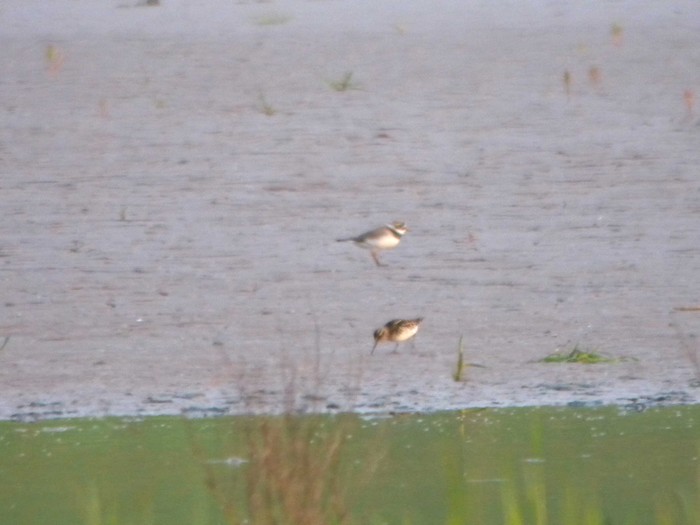
The final member of the “firsts” triumvirate was the female Red-necked Phalarope that was found at North Cave Wetlands YWT (East Yorkshire) on 18th, remaining to 19th.
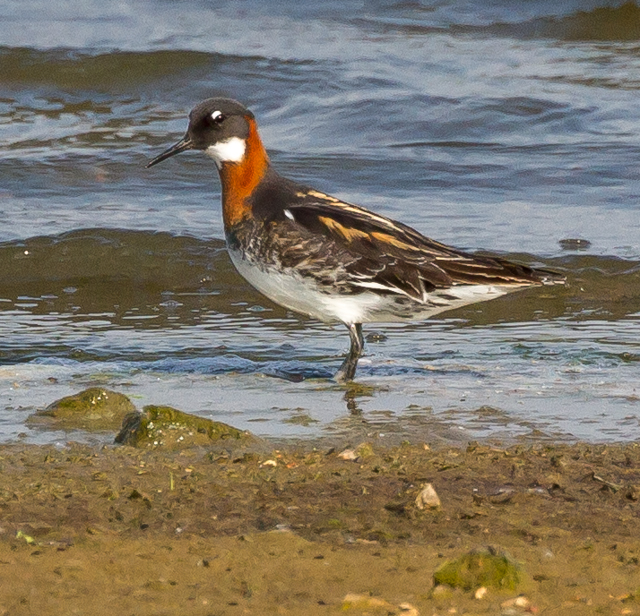
Also new this week was the Spotted Sandpiper found on Unst on 15th ~ only the third spring record for the islands as a whole, following birds on Fair Isle on May 20th 1986 and Fetlar on May 17th 1996. Also this week came yet another inland record for Yorkshire, one found (by a non-birder) at Potteric Carr in the South of the region on 18th where it stayed for the rest of the day. Whether it is perhaps the individual seen in Oxfordshire or even the Warwickshire bird is almost impossible to know, but we do know we are up to five records so far this month, three through the spine of England and one each for our Northern Isles group of Orkney and Shetland.

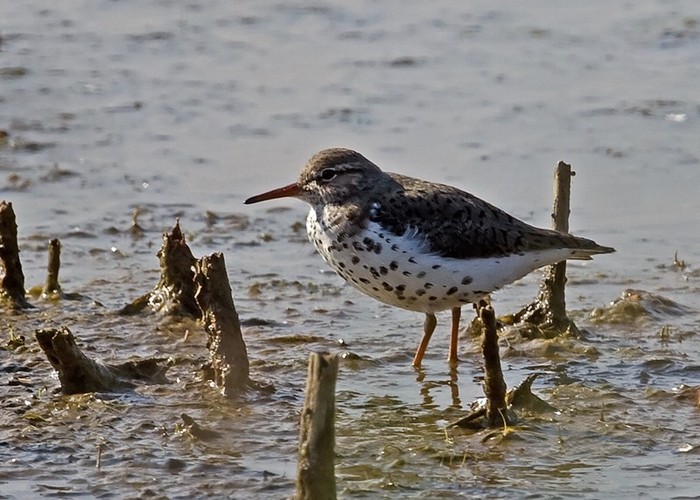
The Lesser Yellowlegs seen last week at Windmill Farm NR (Cornwall) remained to 14th while a bird on the machair at Daliburgh on South Uist on 17th may well have been the same bird seen last week on nearby Benbecula.
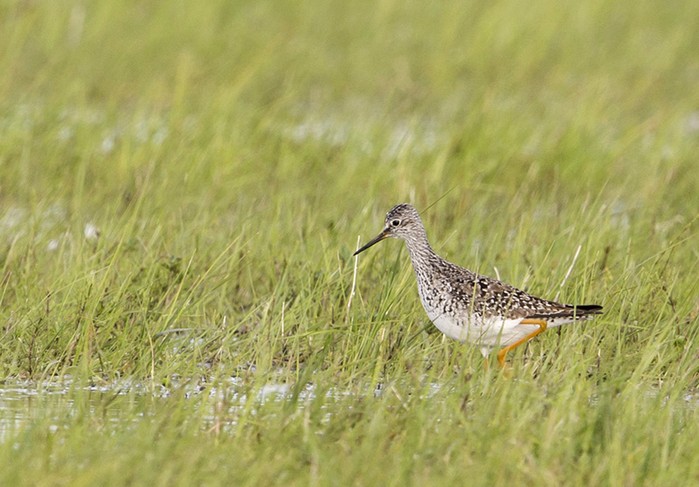
Not too dissimilar from the recent run of Spotted Sandpiper came two excellent inland spring records of Pectoral Sandpipers across the past week. The first appeared at Drayton Bassett (Staffordshire/Warwickshire border) on 18th with another found at Nafford, near Pershore (Worcestershire) later the same day. The third of the week was found on North Ronaldsay (Orkney) on 17th.
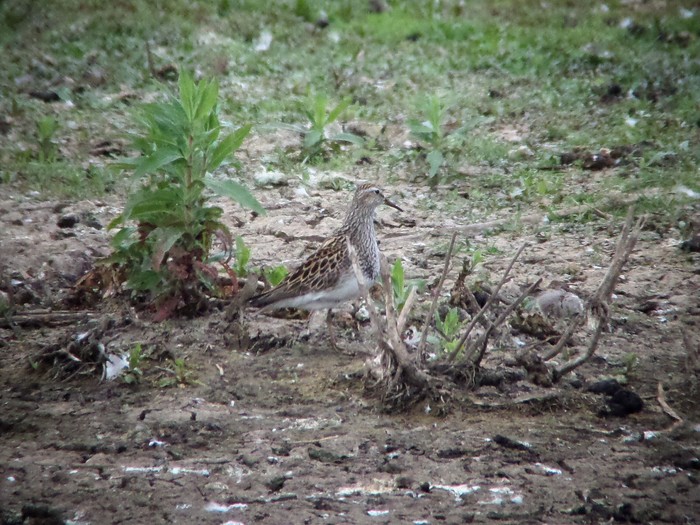
A male Kentish Plover headed towards Exmouth from Dawlish Warren NNR on 15th while in rather more ample supply were Temminck’s Stints ~ at least 26 recorded throughout the week, spread from the southwest of England to central Scotland.
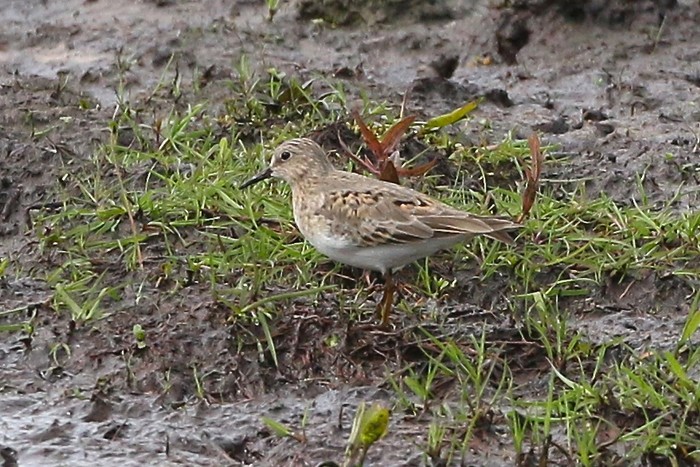
Cley hosted a bare minimum three (there were probably four, five or even six different birds throughout the week but never more than three at one go) while in the east of Norfolk, three were found at Hickling Broad on 19th. There were also still three at Frampton Marsh RSPB (Lincolnshire) on 14th. The weekend saw twos noted at Lunt (Merseyside) and Exminster Marshes RSPB (Devon) on 17th and Cliffe Pools RSPB (Kent) and the London Wetlands Centre WWT on 18th.
Single Temminck’s were noted at Holland Haven (Essex), Loch Leven (Perth & Kinross) and Newport Wetlands (Gwent) on 16th, along the south coast at Cuckmere Haven (East Sussex) and Lytchett Bay (Dorset) on 17th while the 19th saw a single bird reported from Hatfield Moors (South Yorkshire) and doubles five, six and seven of the week were found at Hollesley Bay (Suffolk), Letham Pools (Fife) and Tyttenhanger GPs (Hertfordshire).
Dotterels kicked off with five still at Choseley (Norfolk) and two on South Uist, at Ardvichar on 14th and were followed by two at Birkdale (Lancashire/Merseyside) on 16th, three at Deerness, Mainland (Orkney) (rising to four on 19th), two on the Lowther Hills (Dumfries & Galloway) and one at Great Altcar (Lancashire, all on 17th. Two Dotterels were at Horsey (Norfolk) on 18th-20th and there were two more twos through the week, at Worsthorne (Lancashire) on 18th and Fair Isle on 19th, while a single was at Wallasea (Essex) on 19th.
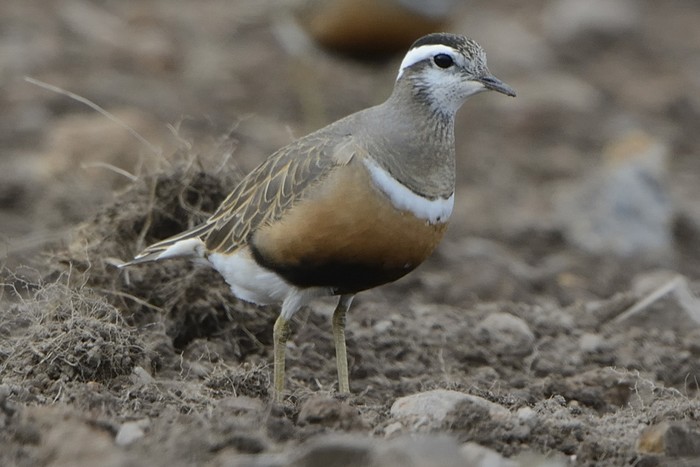
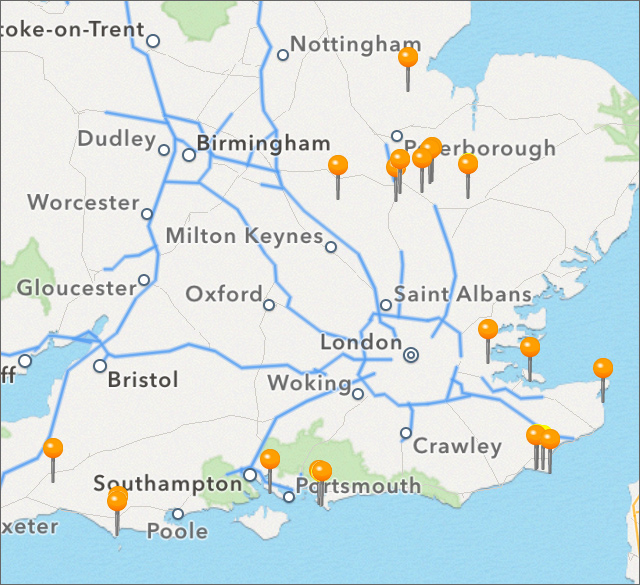
...and so, finally, to Black-winged Stilts. We’ll go through this complicated, though utterly fascinating set of records day by day.
The week began with two birds at Dungeness early on 14th which then moved to Scotney Pits on the border with East Sussex later that morning. On 15th, one Stilt became two at Willow Tree Fen LWT (Lincolnshire) and a flock of four arrived at Clife Pools RSPB (Kent).
The morning of 16th saw two birds make haste through Paxton Pits (Cambridgeshire) and a further two were found at Elmley NNR (Kent). Back in Cambridgeshire, the Paxton birds reappeared at Fen Drayton (collecting the long-at-large orange ringed escape in to the process) before all three upped sticks (or upped stilts I suppose) and moved on to the Ouse Washes for the evening.
Back in Lincolnshire, the two birds at Willow Tree Fen stuck it out to 16th and the 17th saw two Black-winged Stilts arrive at Bracklesham (West Sussex) and the Cambs trio moved along to enjoy Burwell Fen for the day. The 18th saw a pair of Stilts rock up in to Northamptonshire, arriving at Summer Leys NR ~ just the fourth county record, following on from birds in may 1965, May 1997 and, most recently, in May 2008 when a pair were seen at the same site as this week’s duo.
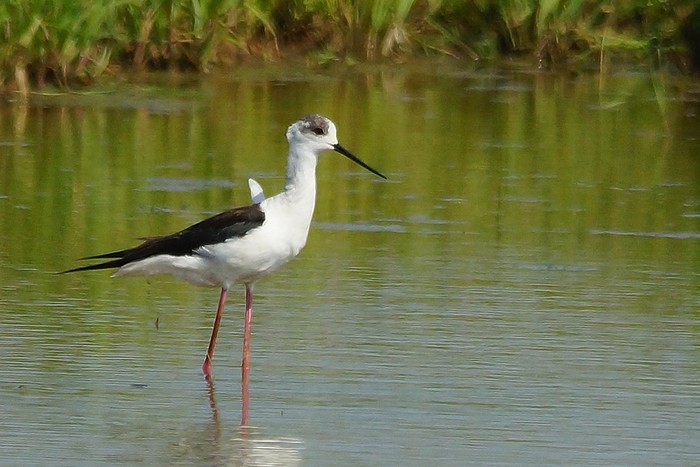
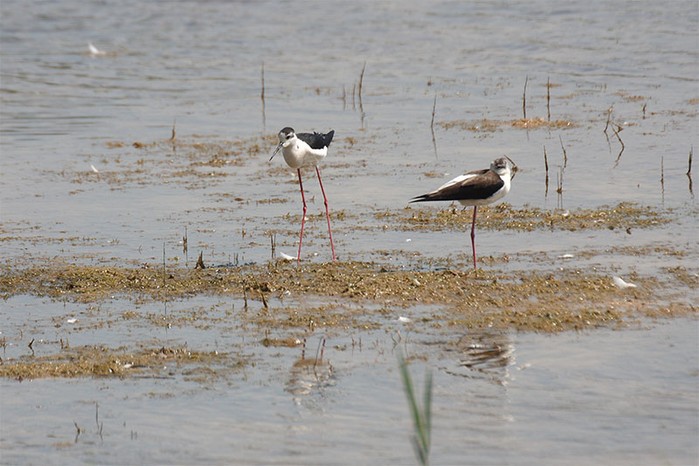
Meanwhile back at Cliffe, after blank days on 16th and 17th, three birds were noted again on 18th while the wild birds in Cambridgeshire took in Offord Cluny on 17th before popping in again at Fen Drayton on 18th where they remained to 19th before heading back towards Earith and Berry Fen on 20th. The same date saw two twos lingeringat Cliffe and Bracklesham.
.jpg)
Phew...that should cover it...
Bang on cue this week, as predicted, came the first White-winged Black Terns of 2014 ~ first were two seen around Donegal’s Tory Island (a first for the island too) on 15th and they were followed by two much-admired (quite right too..) stunning, immaculate adults at Elton Reservoir, near Bury (Greater Manchester) on 17th. Childonias corkerensis has been born….
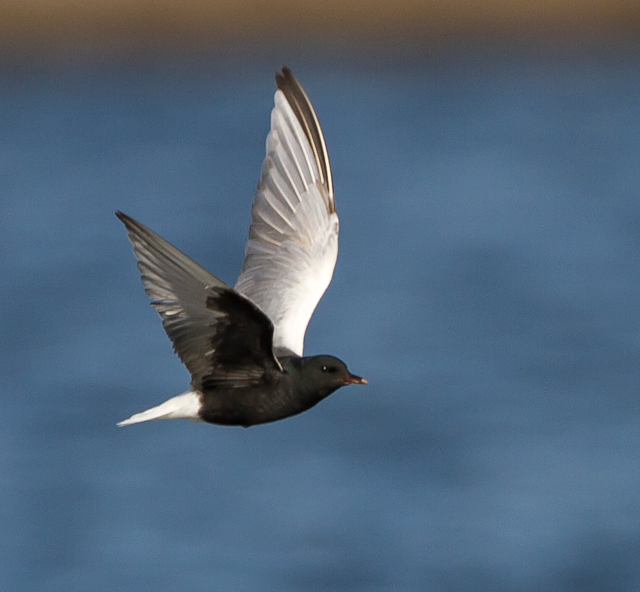
Those two stunners were followed by a single on the Gloucestershire side of Cotswold Water Park on 19th ~ prior to the species removal from the Rarities List, there were nine accepted records for the county, two of them at CWP (over the border in neighbouring Wiltshire there are just two records ~ both at the Water Park, in September 1982 and June 27th 2012.
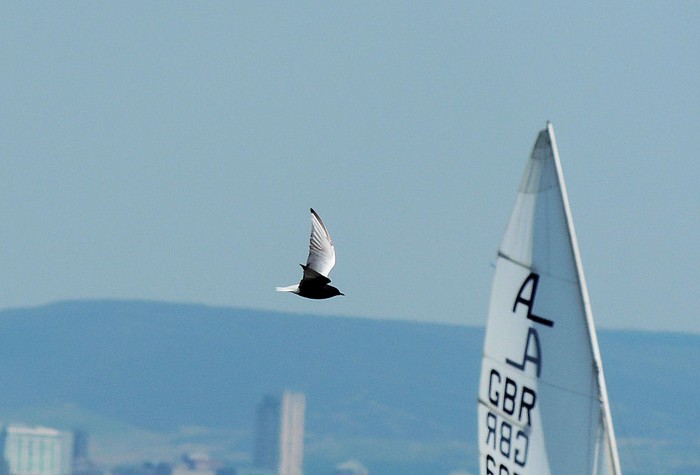
The week concluded with yet another pair of White-winged Black Terns (could they have been the Tory Island or Bury birds? Are they the same pair?) at Loch nam Feitham, near Balranald on North Uist on 20th with a single making a late arrival at Welney WWT (Norfolk) post 9pm on the same day.
/wwbt_jk.jpg)
In Devon, an adult Bonaparte’s Gull was noted at Bowling Green Marsh RSPB on the evening of 14th ~ presumably not the bird that spent another winter there (and was last noted at the end of February). The only Ring-billed Gulls this week were two first-year birds around Dublin Bay on 15th to 18th at least.
The two first-summer Kumlien’s Gulls maintained station at Littlehampton (West Sussex) and on Fair Isle (Shetland) both to 18th at least, while the number of Iceland Gulls fell to 11 birds ~ with up to five around the Outer Hebrides and singles in Cornwall, Worcestershire, Norfolk, North Yorkshire, Shetland and Antrim. Their larger Glaucous Gull chums were represented by only six birds ~ on Fair Isle on 15th and Loch of Hillwell on the Shetland Mainland on 18th ~ with further singles on Bardsey Island (Gwynedd) and Bray (Co. Wicklow), with two on the Outer Hebrides, at Balranald RSPB, all on 19th.

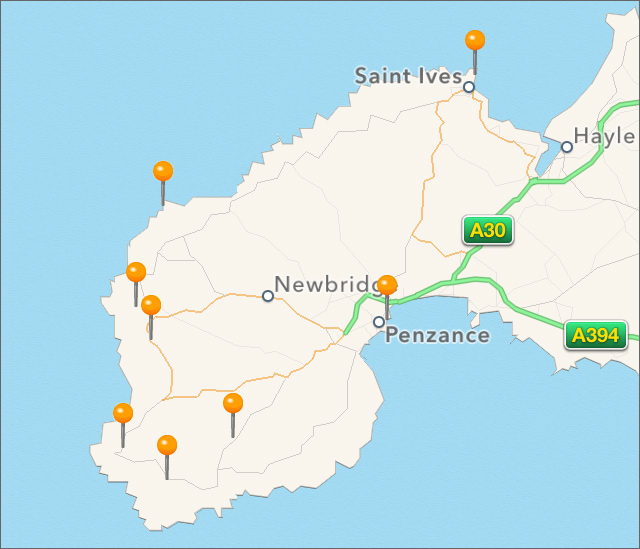
The far western tip of Cornwall seemed to be awash with Black Kites this week as that wave of warmth pushed a small flock and assorted singles over the English Channel along with some big numbers (spectacularly so…) of Red Kites too (where do they come from?).
The first Black was found at Bosistow, near Polgigga during the late afternoon of 15th, and was soon followed by a second there within an hour (along with at least 34 Reds). This then rose to three birds, seen at nearby St. Buryan ~ and were presumed to be the same individuals (with thoughts that there may have been six present!) as they were also in the company of around 34 Red Kites.
On 16th, single early Black Kites were seen again at St. Buryan and then near Sennen and was followed by one at Pendeen (with 44 Reds). Birders at Polgigga were then treated to an astounding gathering of 71 Red Kites within which at least two Black Kites were found. Remarkable scenes in west Penwith…
But not as remarkable as the news in the middle of the day of four (record-breaking) Black Kites being counted at Polgigga in two hours between 1030 and 1230 ~ along with that mass multiple set of Red Kites and two Honey Buzzards for good measure.
Then came a single over Kelynack, near St. Just and one later in the day over Penzance as it became ever-harder to work out just how many birds were involved. Much the same could be said for Scilly where what may have been just one bird toured three islands within 45 minutes on the same morning as the Cornish quartet were logged. First of all came a sighting of one heading west over Higher Town, on St. Martin’s at around 1035, followed (at 1050) by one over New Grimsby on Tresco with the third record of the morning coming over Wingletang on St. Agnes at around 1115. By the afternoon, it was over on Bryher as the grand tour continued.
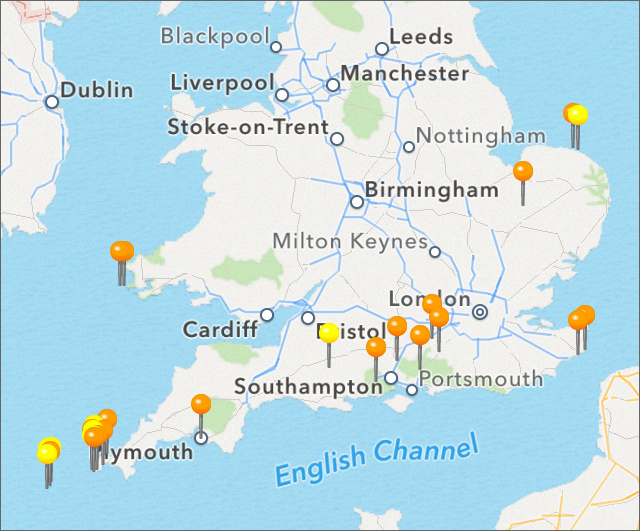
Elsewhere around the country Black Kite records were reported from Butser Hill (Hampshire) on 14th and, strike another two down for the 16th, over Skomer Island and then Martin’s Haven (Pembrokeshire) and back in Hampshire, where a single was seen over Winchester.
The 17th saw Cornish singles logged at Clodgy, near St. Ives and Chapel Carn Brea with one again in Hampshire, over Acres Down and one making to Suffolk, seen at Lakenheath RSPB. On 18th, Black Kites were seen near Fleet (Hampshire), Thursley Common (Surrey), Bockhill Farm, St. Margaret’s at Cliffe (Kent) and again near Sennen (Cornwall) while Kent recorded another, coming in-off at Aycliff on 19th. The last day of the round-up period saw an adult drift over Sheringham Park (Norfolk) which was seen departing the county at Cromer, heading out to sea with the Netherlands in its sights presumably whilst the final one of a busy week for the species flew over Jennycliff Bay (Devon).
Coming in a close to second behind the invasive Kites were a small selection of Red-footed Falcons ~ the first appearing in the early morning sun on St. Mary’s (Scilly) on 17th and was followed later the same day by reports of another first-summer male over the Lee Valley Country Park (Bedfordshire) and one near Sizewell (Suffolk). Two more came along on 19th ~ at Hatfield Moors (South Yorkshire) and a male flew north at Winterton NNR (Norfolk).
Passage Montagu’s Harrier managed to rack up nine or so, all taking full advantage of the super weather for cross-channel passage. Five of them were noted in Kent, four of them on 18th, including two at Sandwich Bay, with other at Herne Bay and Canterbury, with the fifth heading over Dungeness on 19th. Birds elsewhere were males at Porthgwarra (Cornwall) on 14th, Lakenheath Fen RSPB (Suffolk) on 17th and Otmoor RSPB (Oxfordshire) on 18th while females were noted at Old Hall Marshes RSPB (Essex) on 17th and, back in Oxfordshire, near Burford on 20th.
Around 21 Honey Buzzards also made it across the sea to Britain this week, with four for Cornwall (including the two mention earlier with the Kites) and two were seen heading over The Lodge, Sandy (Bedfordshire) on 16th. Norfolk and Somerset saw two singles reported, while further birds were noted from Scilly to Staffordshire and the Wirral.
A male Ortolan in southeast Cornwall gets things underway as we move in to Passerinesville, seen at Churchtown Farm, near Saltash a couple of times during the morning of 17th while up on Shetland a rather fine Little Bunting was a nice find on the beach at Boddam on 16th.
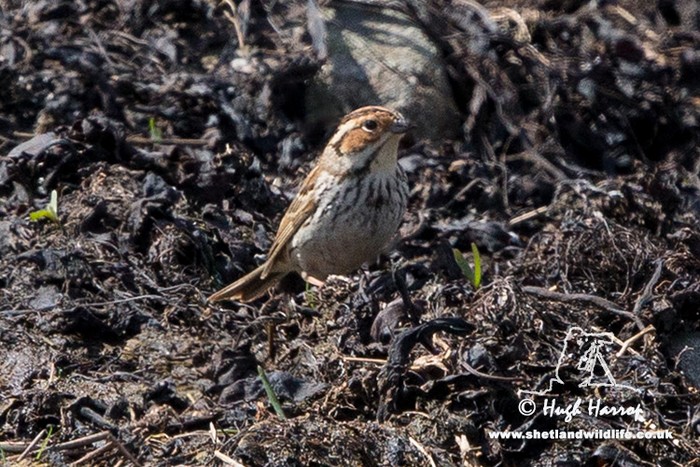
Shetland sneaked in the first Blyth’s Reed Warbler of 2014 at Quendale on 19th ~ it is nigh-on 30 years ago to the day since the unbridled excitement of the first-ever twitchable Blyth’s Reed on a murky May 28th 1984 ~ that was just the 11th for Britain (seven of the others were noted in 1912, the others in 1910, 1928 and 1979) and a further 141 (or so) have followed in those intervening three decades. There are still only seven accepted May records though (until the end of 2012) ~ while June boasts a hefty 20.
There were three different Great Reed Warblers registered over the past seven days ~ the singing male at Slimbridge WWT (Gloucestershire) remained to 14th and was followed by further vocalizers at Walberswick NNR (Suffolk) on 16th and at the Nene Washes (Cambridgeshire) on 18th ~ the latter county has smashed both Suffolk and Norfolk out of sight all year so far and has been the undoubted hotbed of decent birds in East Anglia ~ will all those birders who retired to Norfolk for the birding sell-up and head for Huntingdon?
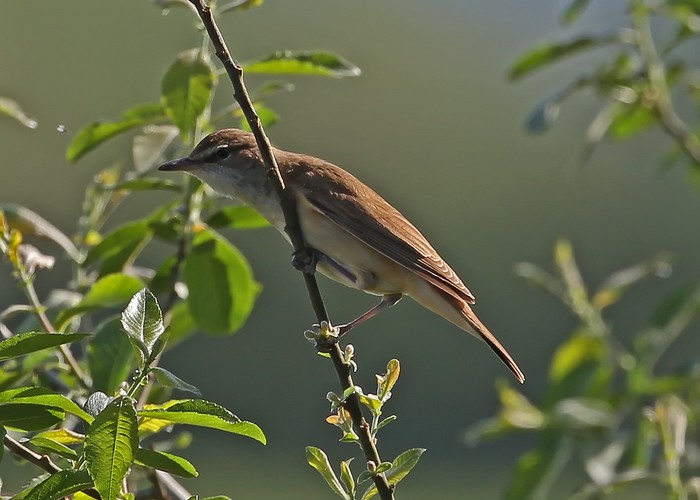
Fair Isle held two Western Subalpine Warblers this week, number 1 (a male, first seen on 3rd) was almost joined by number 2, a female on 16th, the birds, a mile apart both held station to 19th. The island total is now four for the year ~ two of both Western and Eastern seen since 25th April.

Away from the Magic Isle, the expected charge of overshooting rares to the south and west coasts was bang on this week ~ two male Subalpine Warbler spp. were trapped on the Calf of Man on 14th and were followed by a brief bird on Skokholm (Pembrokeshire) on 15th.
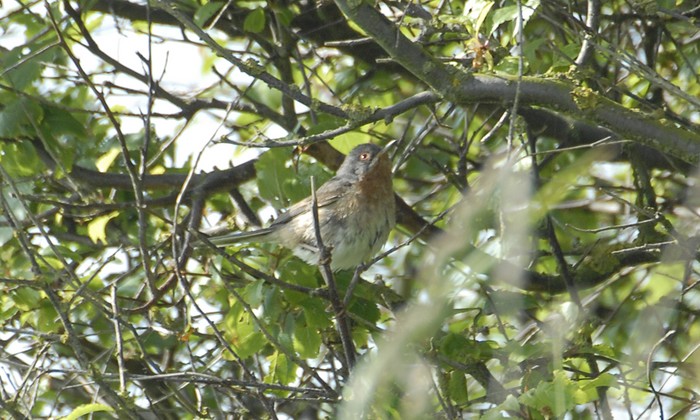
A female Eastern Subalpine Warbler was trapped on Bardsey Island (Gwynedd) on 16th and a male Subalpine spp. was seen on Bryher (Scilly) on the same day. We’re on for a calling Moltoni’s any day now…and you’d best hurry along and see it…and save your pennies too, it’ll be on Shetland for sure.
Waking birders from their slumbers in East Yorkshire was the male Western Subalpine Warbler found at Spurn on 20th ~ the dormant spell beginning to fade as the weather began to break.
The Dursey Island Sardinian Warbler was last reported from Scott’s Garden on 14th ~ a 25 day stay which is quite something for a spring bird.
In Devon, a Tawny Pipit was reported from the grassy knoll by the dog poop bin at Skern on 18th with, just across the Bristol Channel, on Lundy one of the only Short-toed Larks also seen on 18th. The next day saw one appear again on Malcolm’s Head, Fair Isle. Further down the east coast, quite some way down, a Red-throated Pipit was found on the Farnes’ Staple Island on 20th as the tiny trickle of rares on the east coast continued.
One of the very few, actually the only passerine truly on the whole of the east coast until 20th (it is a coast that seems like an impotent, barren land when the wind is warm and the skies have been as blue as they have been all week) was a Bluethroat found at Flamborough Head (East Yorkshire) on 15th. A male Red-spot followed, arriving at Skaw, Whalsay (Shetland) on 19th and hot-on-the-heels of the RTP, Farnes popped in a Bluethroat on 20th. There was also late news of one on the west coast of Scotland, on the golf course at Troon (Ayrshire) on 18th.

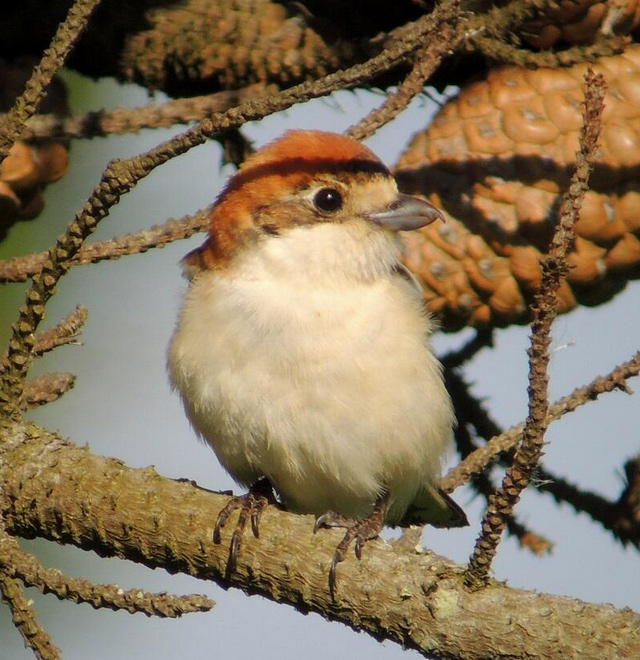
Scilly clocked up another 2014 Woodchat Shrike when a male was found on St. Mary’s on 18th. Three Red-backed Shrikes arrived on 19th, a male proved popular at Lakenheath Fen RSPB while singles were on Fair Isle and Deerness, Mainland (Orkney).
Also on a pretty busy Isles of Scilly this week, a splash-and-dash of multi-coloured marvels in the form of a swarm of nine Bee-eaters scooted over St. Martin’s on 16th with four on St. Mary’s later the same day for good measure. A single was logged over Landguard NR (Suffolk) on 17th and was followed by a heard-only bird at Dungeness (Kent) and three over St. David’s Head (Pembrokeshire) during the rest of the day. The 18th saw a couple of Bee-eaters heard over Winterton NNR (Norfolk) and also Amberley Wild Brooks RSPB (West Sussex) with one each for Acres Down (Hampshire) and again on Scilly, this one on St. Agnes and on 19th one was seen over Dungeness’ trapping area. The week concluded with five early birds at Birling Gap (East Sussex) on 20th, seen off-and-on for 50 minutes before heading east.
Topping them off was a Bee-eater over Polgigga on 16th ~ the site recording four Black Kites, a Great White Egret, a Common Crane and a raft of Red Kites along with the Merops. What a day that must have been!
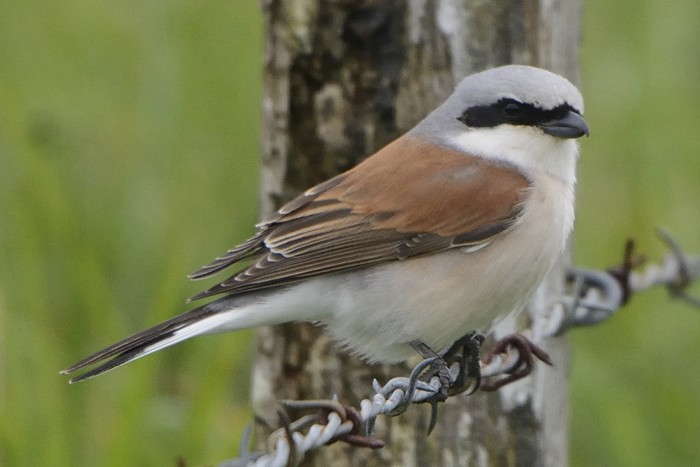

Red-rumped Swallows were sluggish in appearances this week ~ if there was one species that seemed destined to arrive in force this week it was this one, but it wasn’t to be ~ first up was one reported in Leicestershire along the A6 on 17th and this was followed by one over Porthgwarra (Cornwall) the same day.

On 18th came the inevitable record from Cambridgeshire (!), seen near Cambourne while more eye-catching were records the same day at Burrafirth, Unst (Shetland) ~ that next Asian Red-rumped is going to be a) popular and b) most likely on Shetland… ~ what do you know, three hours after writing that, the Finns pull one out the bag!) ~ and, better still, was one seen over gardens at Strangford Lough (Co. Down), only the second record for the county, following on from a three-day bird in November 1990 and just the third for the north in all, the other seen in Derry in November 1980. Another remote Red-rumper was found on Tiree, at Ceann a’Mhara on 20th along with a second on Shetland, over Loch of Hillwell.
Few of the 20 Golden Orioles noted this week were actually seen, several heard only birds reported through the week. Up to three were on St. Mary’s (Scilly) off and on through the week (with a definite three counted on 20th) but they were beaten by four at Sandwich Bay (Kent) on 19th. Two singles were recorded in Norfolk while also of note as were singles on 19th on Bardsey Island and Pontrhydfendiad in Ceredigion (I sooooo hope that they never, ever get a Cretzschmar’s Bunting as I think my keyboard will melt). Last but definitely not least, a male in Lochmaddy, North Uist on 20th.
Tailing off, as you’d perhaps expect as May draws on, were Hoopoes with just five noted, two of them on 16th, at Postbridge (Devon) and Holkham (Norfolk). The third was seen in flight at Rye Harbour (East Sussex) on 18th, the fourth and fifth were at Waterfall (Co. Cork) and Storrington (West Sussex) on 19th. Wrynecks too were thin on the ground, singles at Boddam, Mainland (Shetland) from 16th and on North Ronaldsay (Orkney) on 19th the only ones on offer.
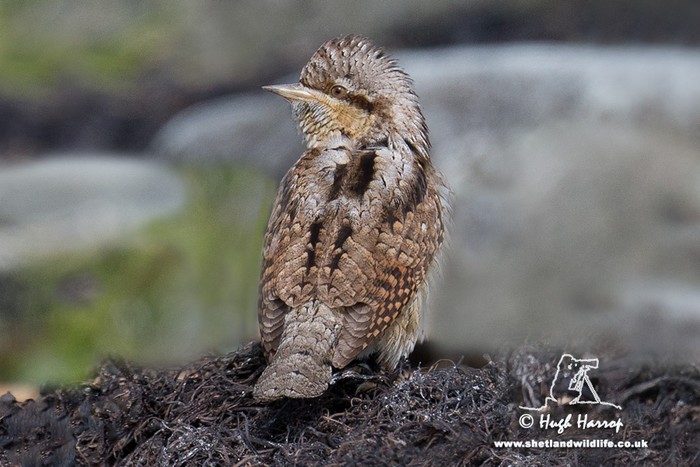
The female Serin stuck it out at Gibraltar Point NNR (Lincolnshire) until 14th and the Notorious TBXB remained in the sweltering Breckland, present at Lynford Aboretum to 20th.
Finally comes news of the first Common Rosefinch of the year, a first-summer male caught and ringed in the valley at Nanjizal (Cornwall) on 18th.
With every May day that passes the expectations become higher and higher as to just what might pop up. The weather suggests that perhaps the east coast may finally get a look in as the high pressure breaks down by Thursday-ish but the forecast intimates that, once again, Shetland is odds-on to hit the home-run big one.
May 21st has proffered full-on Plover fest’ in the past ~ a White-tailed in 1984 and a Caspian in 1988 and with both of those species featuring frequently in the Western Palearctic collection of rares of late, there’s still the slimmest chance of one of these appearing before the spring fades to summer.
A second White-tailed Plover was found in Merseyside on May 27th 2010 of course, a bird which was subsequently tracked for 100’s of miles countrywide…
In keeping with the warm weather of the week just gone, it wasn’t that long ago that the Herefordshire hosted an amazing Cream-coloured Courser from May 23rd 2012 and keeping things off the passerine trail for a tad longer, May 27th 1990 saw that mind-boggling discovery of the Lundy Ancient Murrelet ~ still one of the great finds of the modern era. You really wanted to have started twitching after that one…
We are entering a time when we’re bang-on for a properly rare swift (despite both White-throated Needletail and Pacific Swift falling last year either would be well-received again…) while long overdue for many is the appearance of another rather more waif-like spring mega from the east ~ Asian Desert Warbler.
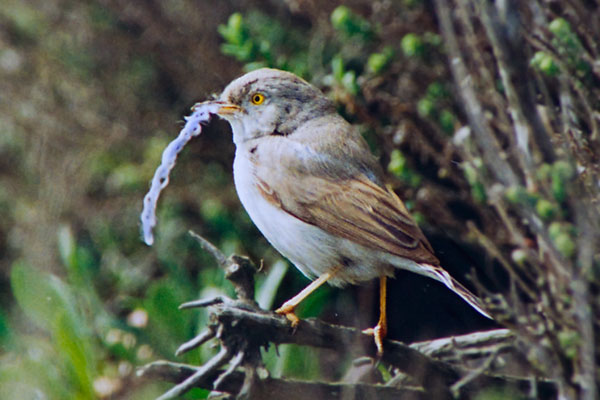
Despite a dozen records to date, there has been just been only two in the last 14 years, the most recent coming being a brief, photographed bird in Kent in November 2012. However, May has boasted two records of this sandy pleaser, between May 7th-11th 2000 at Spurn and, 21 years ago this week, a male at The Hood on Blakeney Point.
What a brilliant find that particular first for Norfolk was…. :o)
Mark Golley
21 May 2014
References:
Flood, B. & Fisher, A. “Multimedia Identification Guide to North Atlantic Seabirds:Pterodroma Petrels” ~ Pelagic Birds & Birding Multimedia Identification Guides 2013
Madeiros, J., Flood, B & Zufelt, K. 'Conservation and at-sea range of Bermuda Petrel (Pterodroma cahow) ~ North American Birding (in press)
Special thanks this week to Bob Flood and Ashley Fisher for allowing me to include extracts from the brilliant “Multimedia Identification Guide to North Atlantic Seabirds:Pterodroma Petrels” within the Bermuda Petrel text. Thanks to Niall Keogh and Ryan Wilson-Parr for the extremely gripping Bermuda Petel photos. Also many thanks to Fair Isle Bird Observatory warden David Parnaby for all his assistance with facts, figures and photos too.
Contributors websites

















